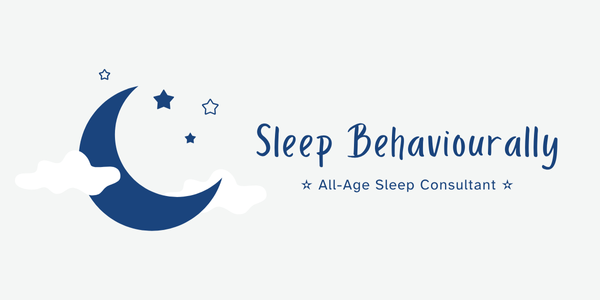The holidays are a time for fun, family, and making memories. But all that excitement can wreak havoc on your child’s sleep schedule. Late nights, new environments, and a break from the usual routine can leave your little one overtired and out of sorts. Whether you’ve been traveling across time zones, staying up late for family gatherings, or simply relaxing the usual bedtime rules, getting your child’s sleep back on track after a holiday can feel like a daunting task.
If you’re struggling to restore your child’s sleep routine after vacation, you’re not alone. This is one of the most common challenges parents face when returning from holidays. The good news is that with the right strategies and a little patience, you can help your child return to a healthy sleep schedule. From toddler sleep regression to baby sleep disruption, this comprehensive guide will provide you with practical tips to get your family’s sleep back on track.
The Importance of a Consistent Sleep Schedule
A consistent sleep schedule is crucial for a child’s development and well-being. It helps regulate their internal body clock, also known as the circadian rhythm, which controls the sleep-wake cycle. When a child’s sleep schedule is disrupted, it can lead to a range of problems, including irritability, difficulty concentrating, and a weakened immune system. For toddlers and young children, a consistent sleep routine is even more critical as their bodies and minds are rapidly developing. Getting back to a regular sleep schedule after a holiday is not just about avoiding bedtime battles; it’s about supporting your child’s overall health.
Gradual Adjustment is Key
After a holiday, it can be tempting to jump right back into your old routine. However, a sudden shift in bedtime and wake-up times can be jarring for a child. Instead, aim for a gradual adjustment. Start by moving their bedtime and wake-up time earlier by 15-30 minutes each day. This gentle approach gives their body time to adapt to the new schedule without causing too much disruption. For example, if your child has been going to bed at 10 PM during the holiday and their usual bedtime is 8 PM, you can start by putting them to bed at 9:45 PM on the first night, 9:30 PM on the second, and so on, until you reach the desired bedtime. This method is particularly effective for toddlers who may be more resistant to change.
Re-establish a Relaxing Bedtime Routine
A consistent and relaxing bedtime routine is a powerful tool for signaling to your child that it’s time to wind down and prepare for sleep. If you’ve let the routine slide during the holiday, now is the time to bring it back. A good bedtime routine should be calm and predictable, lasting around 20-30 minutes. It could include activities like a warm bath, reading a story, or listening to calming music. The key is to create a sequence of events that your child associates with sleep. This predictability can be very comforting for a child, especially after the overstimulation of a holiday. Avoid screen time, including TVs, tablets, and phones, for at least an hour before bed, as the blue light can interfere with the production of melatonin, the sleep hormone.
Create a Sleep-Friendly Environment
Your child’s sleep environment plays a significant role in their ability to fall asleep and stay asleep. Make sure their bedroom is dark, quiet, and cool. Blackout curtains can be a great investment to block out any unwanted light, especially during the lighter summer evenings. A white noise machine can also be helpful to mask any sudden noises that might wake your child. Ensure their bed is comfortable and that they have their favorite teddy or blanket. The goal is to create a space that is solely for sleep and relaxation. If your child has been co-sleeping with you during the holiday, it’s important to gently transition them back to their own bed. You can start by sitting with them in their room until they fall asleep and gradually reduce your presence over a few nights.
Be Patient and Consistent
Getting a child’s sleep back on track after a holiday takes time and patience. There will likely be some resistance and a few rough nights, but it’s important to stay consistent with your approach. Every child is different, and some may adjust more quickly than others. The key is to remain calm and reassuring, providing them with the comfort and support they need. If you’re struggling, don’t hesitate to seek professional help. A pediatric sleep consultant can provide you with a personalized plan and guidance to help your family get the rest you need.
Age-Specific Sleep Strategies
Babies (0-12 months)
For babies, getting back to a regular sleep schedule after holidays requires extra attention to their natural sleep patterns. Babies thrive on routine, and even a few days of disruption can affect their sleep-wake cycle. Start by re-establishing consistent feeding times, as this helps regulate their internal clock. Pay close attention to wake windows – the amount of time your baby can comfortably stay awake between sleep periods. Overtired babies often have more difficulty falling asleep and staying asleep.
If you’ve been traveling across time zones with your baby, adjust their schedule gradually by shifting feeding and sleep times by 15-30 minutes each day. Keep the room dark during sleep times and bright during wake periods to help reset their circadian rhythm. Remember that babies under 6 months don’t have fully developed circadian rhythms, so they may adjust more quickly than older children.
Toddlers (1-3 years)
Toddlers can be particularly challenging when it comes to sleep schedule changes after holidays. They’re old enough to remember the fun and excitement but may not understand why bedtime has to be earlier again. Toddler sleep regression after vacation is common and usually temporary.
Start by bringing back familiar bedtime routines that signal it’s time to sleep. This might include a specific sequence of activities like bath time, story time, and cuddles. Be prepared for some resistance – toddlers may test boundaries more after a period of relaxed rules. Stay consistent with your approach, even if it means dealing with some tears or protests.
Consider using a toddler clock or visual schedule to help them understand when it’s time to sleep and when it’s time to wake up. These tools can be particularly helpful for toddlers who struggle with the concept of time.
Preschoolers (3-5 years)
Preschoolers are more capable of understanding explanations about why sleep schedules need to return to normal. Talk to them about the importance of sleep for their growing bodies and minds. You can involve them in creating a new bedtime routine or choosing which pajamas to wear.
At this age, children may have developed some independence around bedtime, but holidays can sometimes create regression in these skills. Be patient as they readjust to sleeping in their own bed or following their usual bedtime routine.
School-Age Children (6+ years)
School-age children often face the additional challenge of needing to adjust their sleep schedule before returning to school. The transition from holiday freedom to school structure can be particularly difficult. Start adjusting their schedule at least a week before school resumes if possible.
Older children can be more involved in planning their return to routine. Discuss with them how much sleep they need and work together to create a schedule that allows for adequate rest. They may also benefit from understanding the consequences of poor sleep, such as difficulty concentrating in school or feeling grumpy with friends.
Common Holiday Sleep Challenges and Solutions
Jet Lag and Time Zone Changes
Traveling across time zones can significantly disrupt your child’s sleep schedule. The key to managing jet lag in children is gradual adjustment. Before traveling, you can start shifting your child’s schedule toward the destination time zone. Upon return, use light exposure to help reset their internal clock – bright light in the morning and dim light in the evening.
For eastward travel (which typically causes more severe jet lag), try to expose your child to morning sunlight as soon as possible. For westward travel, keep them active in the evening light. Remember that it typically takes about one day per time zone crossed for the body to fully adjust.
Overstimulation and Excitement
Holidays often involve more stimulation than usual – new places, people, activities, and experiences. This excitement can make it difficult for children to wind down at bedtime. After returning home, focus on creating calm, predictable evenings. Reduce stimulating activities in the hours before bedtime and create a peaceful environment that contrasts with the excitement of the holiday.
Changes in Sleep Environment
Sleeping in unfamiliar places during holidays can disrupt a child’s sleep patterns. Some children become accustomed to co-sleeping with parents or siblings during vacation, making the transition back to their own bed challenging. Others may have gotten used to different lighting, noise levels, or room temperatures.
To ease this transition, try to recreate familiar elements of their home sleep environment. This might include bringing their favorite blanket or stuffed animal, using a white noise machine, or maintaining the same room temperature they’re used to at home.
Disrupted Meal Times
Holiday eating patterns often differ significantly from regular routines. Late dinners, extra snacks, and different meal times can all affect sleep quality. Large meals close to bedtime can make it difficult for children to fall asleep, while hunger can cause early morning wake-ups.
Return to regular meal times as soon as possible after your holiday. Ensure your child has a light, healthy snack if they’re hungry before bed, but avoid large meals within two hours of bedtime. Stay hydrated throughout the day, but limit fluids close to bedtime to prevent nighttime wake-ups.
Creating a Post-Holiday Sleep Plan
Week 1: Gentle Transition
The first week after returning from holiday should focus on gentle transitions. Don’t expect perfection immediately. Start by re-establishing key elements of your routine while being flexible about timing. If your child’s bedtime shifted significantly during the holiday, move it back gradually rather than making dramatic changes all at once.
Focus on consistency in your bedtime routine rather than strict timing. The sequence of activities (bath, story, cuddles) is often more important than the exact time these activities occur. This helps signal to your child’s brain that it’s time to prepare for sleep.
Week 2: Establishing Consistency
By the second week, you should be working toward your regular schedule. Most children will have adjusted to the time change by now, and you can be more firm about bedtime and wake-up times. Continue to be patient with any resistance, but maintain consistency in your approach.
This is also a good time to address any new sleep associations that may have developed during the holiday. If your child became accustomed to falling asleep in your bed or with extra comfort items, gradually work on transitioning them back to their usual sleep arrangements.
Week 3 and Beyond: Maintaining the Routine
By the third week, your child should be back to their regular sleep schedule. Focus on maintaining consistency and addressing any lingering issues. If you’re still experiencing significant sleep difficulties after three weeks, it may be time to consult with a pediatric sleep specialist.
The Role of Daytime Activities in Sleep Recovery
Natural Light Exposure
Exposure to natural light plays a crucial role in regulating circadian rhythms. After a holiday, make sure your child gets plenty of natural light during the day, especially in the morning. This helps signal to their body that it’s time to be awake and alert. Conversely, dim the lights in the evening to signal that bedtime is approaching.
If you’ve returned from a sunny vacation to a darker climate, consider using a light therapy lamp in the morning to help maintain your child’s circadian rhythm. Even 15-20 minutes of bright light exposure upon waking can make a significant difference.
Physical Activity
Regular physical activity during the day can help children sleep better at night. After a holiday, encourage active play and outdoor time. However, avoid vigorous exercise within three hours of bedtime, as this can be stimulating and make it harder for children to wind down.
The type of activity matters too. Morning and afternoon exercise can help regulate the sleep-wake cycle, while gentle activities like yoga or stretching in the evening can be part of a calming bedtime routine.
Managing Screen Time
Holidays often involve more screen time than usual, whether from travel entertainment, relaxed rules, or new devices received as gifts. The blue light emitted by screens can interfere with melatonin production, making it harder to fall asleep.
Re-establish screen time limits as part of your post-holiday routine. Create a “digital sunset” by turning off all screens at least one hour before bedtime. If your child is used to falling asleep with a device, gradually reduce this dependency by replacing screen time with calming activities like reading or listening to soft music.
Nutrition and Sleep After Holidays
Returning to Regular Meal Patterns
Holiday eating often involves irregular meal times, extra treats, and different foods than usual. These changes can affect sleep quality and energy levels throughout the day. Return to regular, balanced meals as soon as possible after your holiday.
Focus on providing steady energy throughout the day with balanced meals that include protein, complex carbohydrates, and healthy fats. Avoid giving your child large amounts of sugar or caffeine, especially in the afternoon and evening, as these can interfere with sleep.
Hydration and Sleep
Proper hydration is important for good sleep, but timing matters. Ensure your child drinks plenty of water throughout the day, but limit fluids in the hour or two before bedtime to prevent nighttime wake-ups for bathroom trips.
If your child is thirsty at bedtime, offer small sips of water rather than a full cup. Some children may have gotten into the habit of drinking more at bedtime during the holiday, so you may need to gradually reduce this if it’s causing sleep disruptions.
When to Seek Professional Help
While most children will adjust to their regular sleep schedule within a few weeks of returning from holiday, some may need additional support. Consider consulting a pediatric sleep specialist if:
- Your child is still having significant sleep difficulties after three weeks
- Sleep problems existed before the holiday and have worsened
- Your child is showing signs of anxiety or fear around bedtime
- The whole family’s sleep is being significantly affected
- You’re feeling overwhelmed and need personalized guidance
A sleep consultant can provide you with a customized plan that takes into account your child’s specific needs, your family’s lifestyle, and any underlying sleep issues. They can also help you navigate any sleep regressions or setbacks that may occur during the adjustment period.
Need Help with Your Child’s Sleep?
If you’re feeling overwhelmed and need support getting your child’s sleep back on track, we’re here to help. At sleepbehaviourally.com, we offer personalized sleep consultation services to help families establish healthy sleep habits. Contact us today to learn more about how we can help you and your child get the restful sleep you deserve.





0 Comments